I have held the best news till last in this message. Your image 7590 shows Trapania brunnea as you thought. However, images 7817 and 7825 show an undescribed species of Trapania. I have never seen it before. It has a distinctive (surely species-specific), broad, golden stripe on the outer face of the extra-rhinophoral processes and extra-branchial processes, the basal half of the oral tentacles is white, and the propodial tentacles are very stout. There is no way it could be a brown form of (the endemic NZ) Trapania rudmani, or a colour form of (the endemic temperate Australian) Trapania benni.
Discovery Information:
Location: Barren Arch, Poor Knights Islands, New Zealand
Boat: Sun Spy (Northland Dive)
Species: Trapania sp. (undescribed), length 10-20mm
Depth: 12 metres
Water temperature: 15 degrees Celsius
Dive Team: Alison Perkins and Cameron Russo
Photography: Alison Perkins
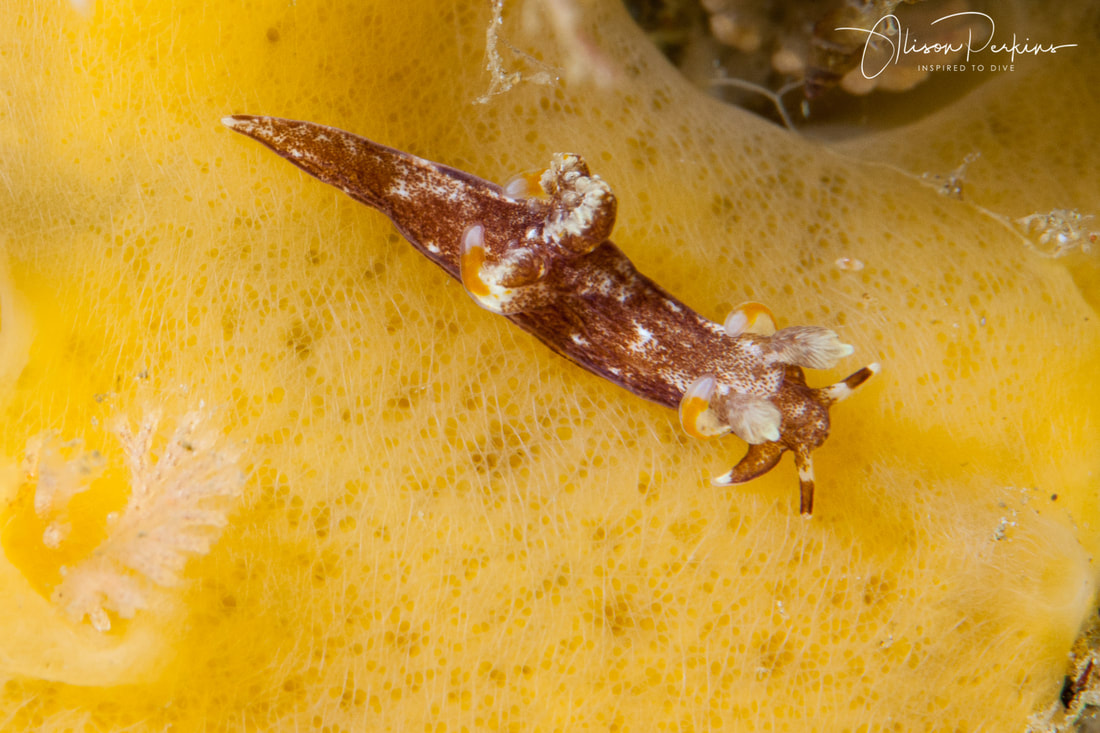

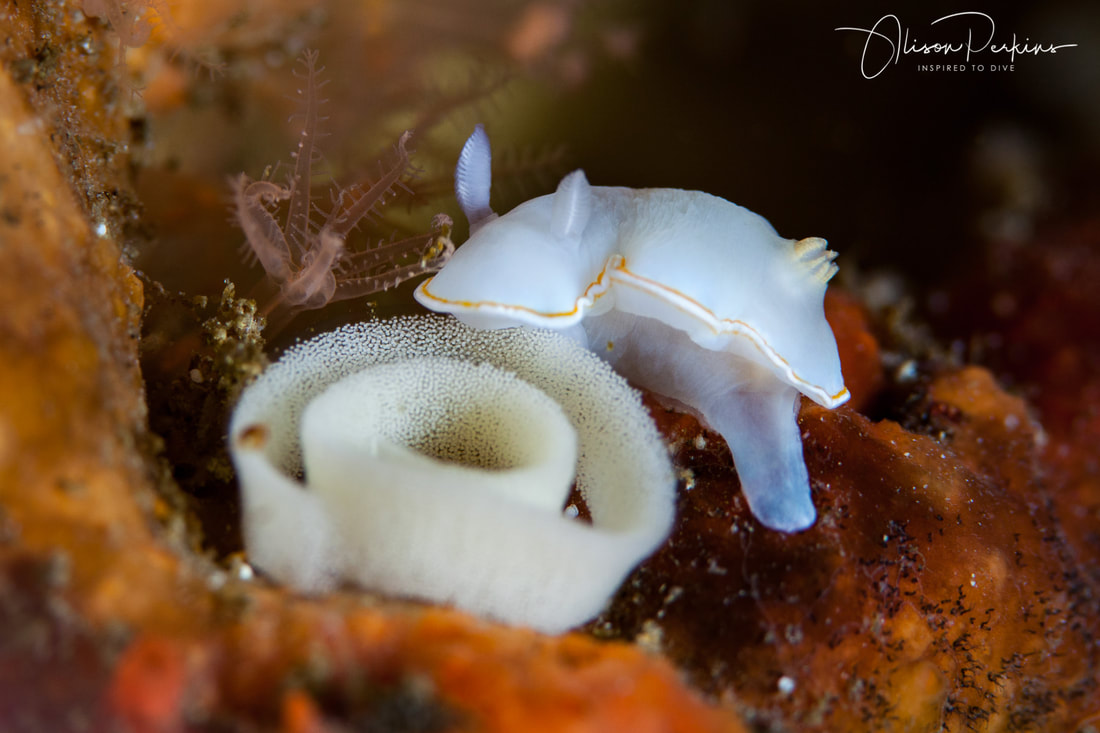
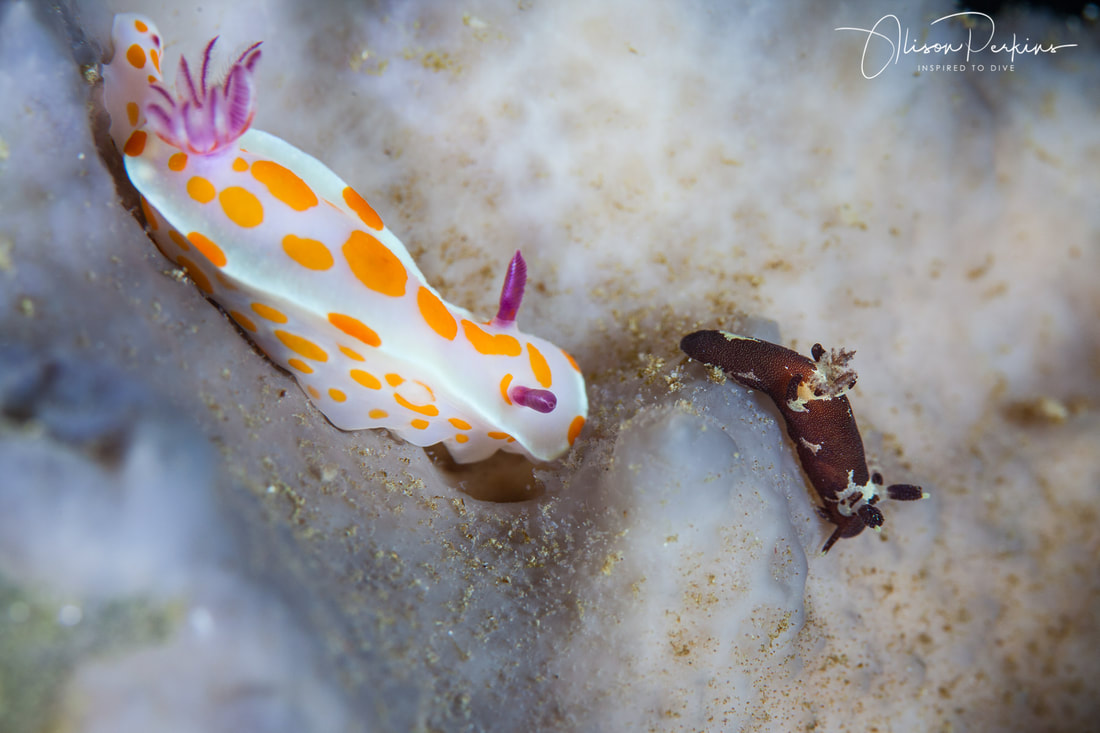
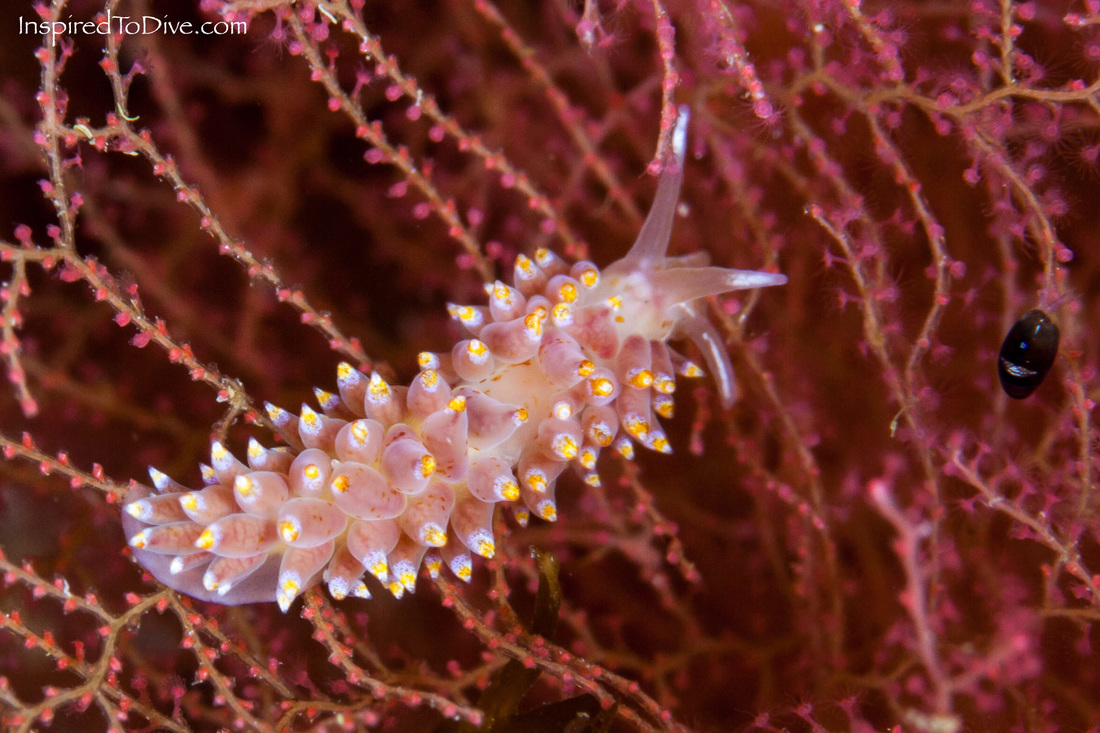
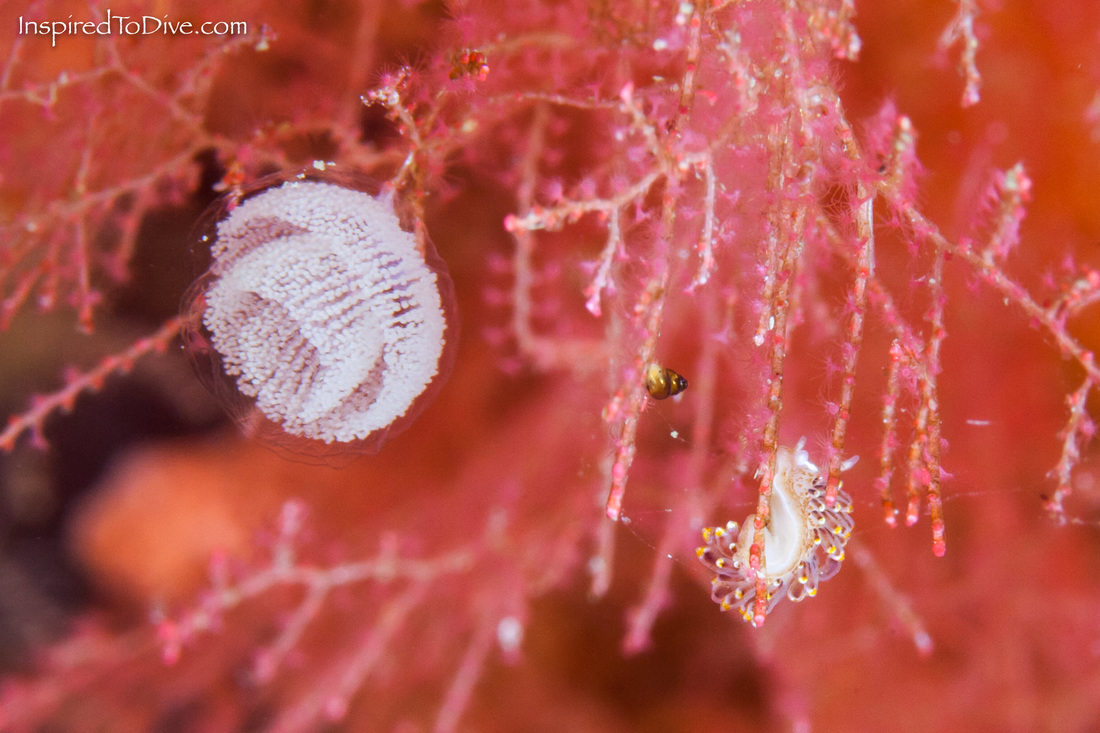
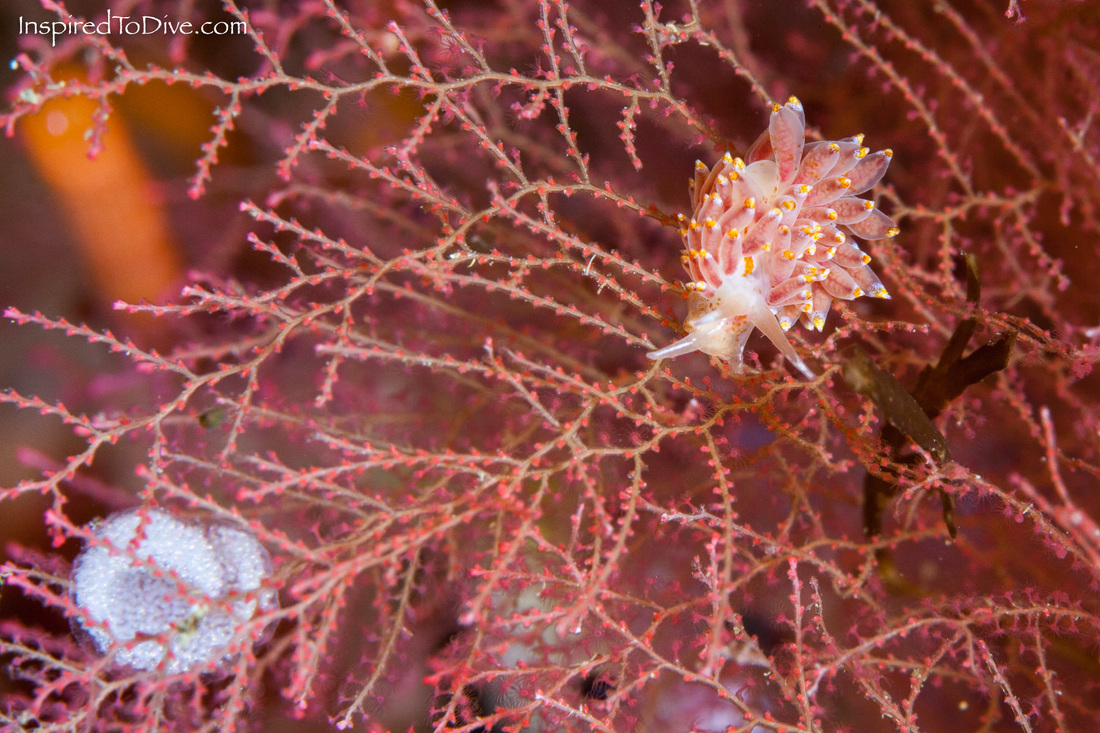
 RSS Feed
RSS Feed

